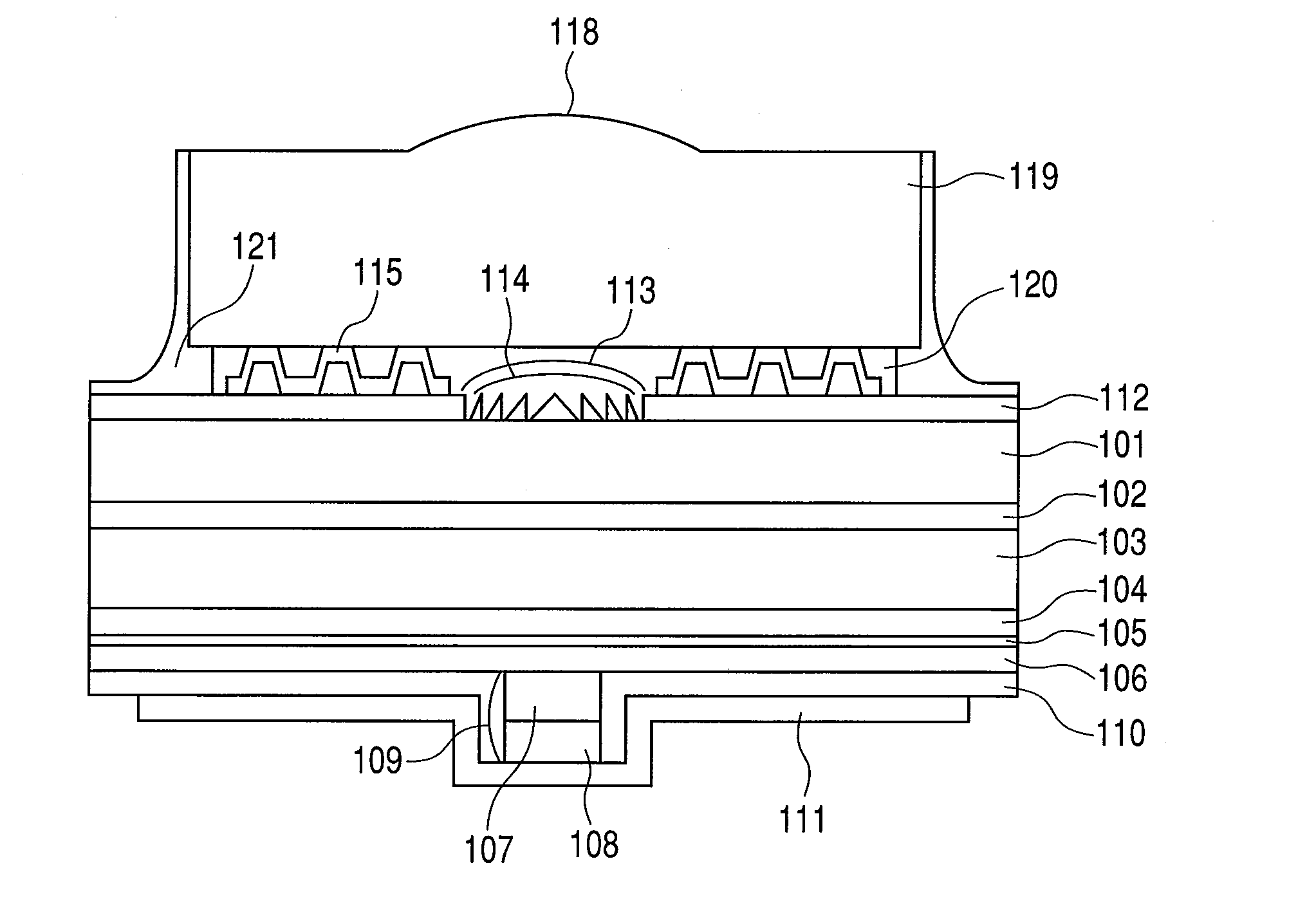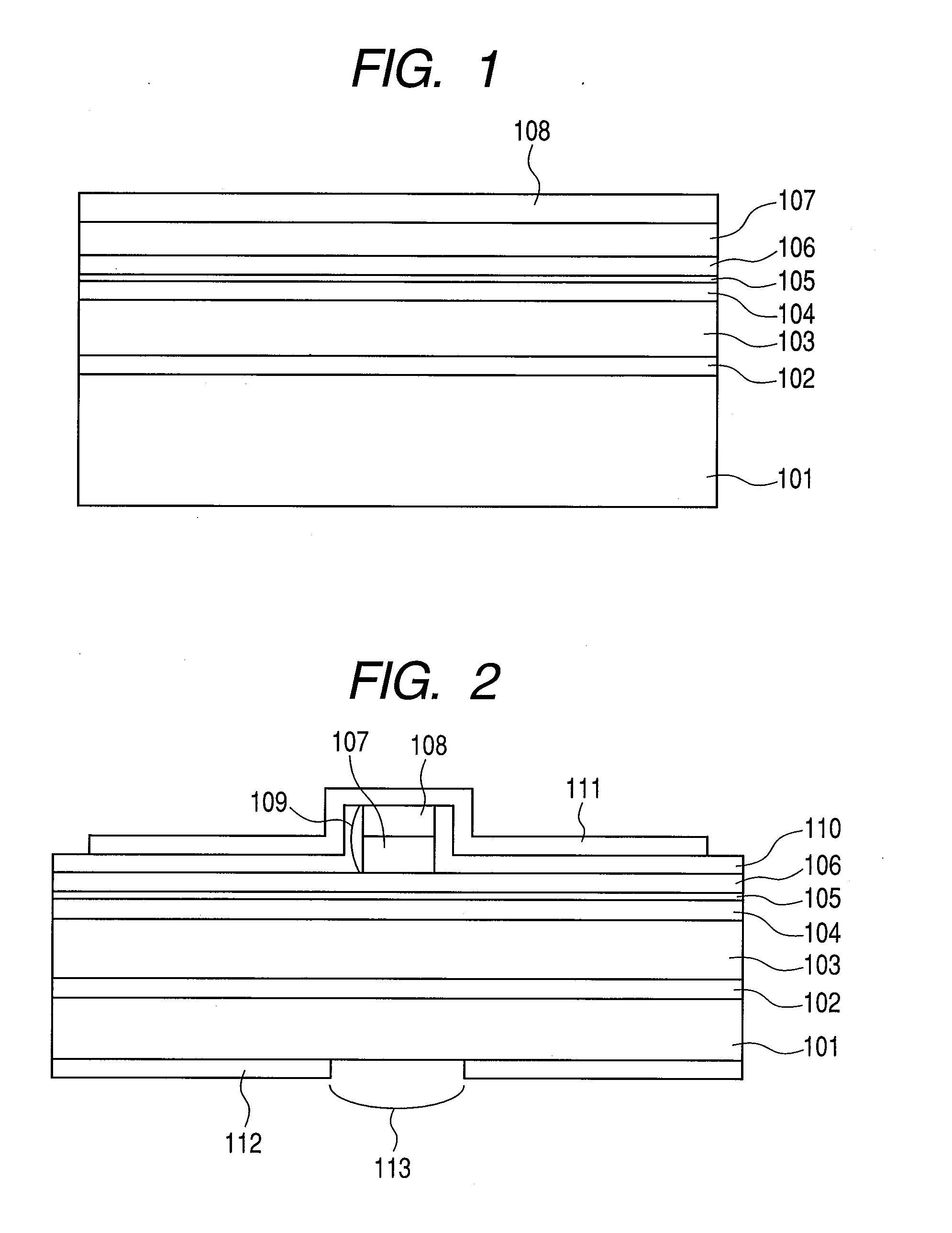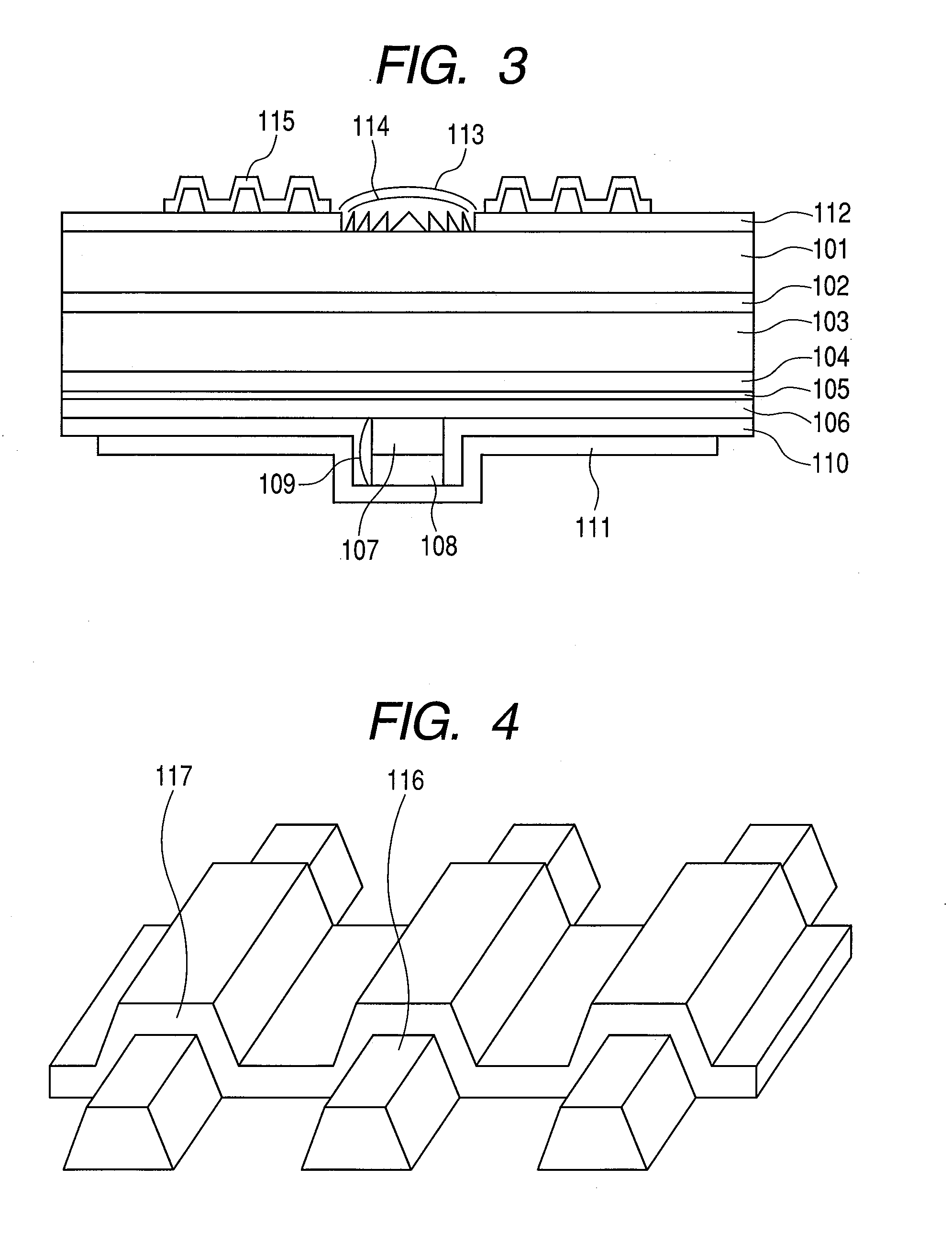Optical module
- Summary
- Abstract
- Description
- Claims
- Application Information
AI Technical Summary
Benefits of technology
Problems solved by technology
Method used
Image
Examples
first embodiment
[0039]A first embodiment of the present invention will be described below in accordance with a device fabricating procedure. In this first embodiment, the semiconductor light emitting device is constructed as an AlGaInAs-based surface emitting type semiconductor laser with a wavelength of 1300 nm.
[0040]First, such single-crystal multilayers as shown in FIG. 1 are formed on an n-InP substrate 101 by metal organic chemical vapor deposition. More specifically, an n-InP buffer layer 102 and an n-type Bragg reflector 103 having a ¼ thick wavelength, which lattice-matches InP, are formed first. The n-type Bragg reflector 103 is constituted by a laminated film of n-InGaAs and n-InAlAs and has a reflectance of 99.8%. Subsequently, an n-InGaAlAs lower SCH (Separate Confinement Heterostructure) layer 104 lattice-matched with InP, a strained quantum well active layer 105 composed of an InGaAlAs strained barrier layer (band gap 1.32 eV, barrier layer thickness 8 nm) and an InGaAlAs strained qua...
second embodiment
[0049]A second embodiment of the present invention will now be described in accordance with a device fabrication procedure in which a semiconductor light emitting device is constituted as an AlGaInAs semiconductor laser with a wavelength of 1300 nm. First, such single-crystal multilayers as shown in FIG. 7 are formed on an n-InP substrate 101 by metal organic chemical vapor deposition. In forming the single crystal multilayer film, there first is formed a Bragg reflector 202 having an optical length of ¼ thick wavelength, which lattice-matches InP. The Bragg reflector 202 is constituted by a laminated film of n-InGaAs an n-InAlAs and has a reflectance of 70%. Subsequently, an n-InP lower cladding layer 203, a strained quantum well active layer 204 composed of an InGaAlAs strained barrier layer (band gap 132 eV, barrier layer thickness 8 nm) and an InGaAlAs strained quantum well layer (band gap 0.87 eV, well layer thickness 6 nm), a p-InP upper cladding layer 205, and a p-InGaAs cont...
third embodiment
[0057]As a third embodiment of the present invention there is shown an example in which, instead of the plated spring, a foamed resin is used in the bonding portion between InP substrate and glass substrate. In this embodiment, the fabrication of light emitting devices on an InP substrate 101 is performed in the same way as in the second embodiment. Next, foamed silicone 301 is applied at a thickness of about 10 μm to the back surface of the substrate 101 and is allowed to foam and cure. Then, the foamed silicone 301 is subjected to photolithography so as to remain at only a portion exclusive of the portion of light emitting devices and lenses, affording the structure of FIG. 10. Under the foaming action, the foamed silicone after curing has a thickness of about 20 μm, still possessing a spongy flexibility permitting adjustment of the spacing between two wafers.
[0058]Next, using silicone-gel 120, a micro lens array 119 having micro lenses is bonded to the position corresponding to t...
PUM
 Login to View More
Login to View More Abstract
Description
Claims
Application Information
 Login to View More
Login to View More - R&D
- Intellectual Property
- Life Sciences
- Materials
- Tech Scout
- Unparalleled Data Quality
- Higher Quality Content
- 60% Fewer Hallucinations
Browse by: Latest US Patents, China's latest patents, Technical Efficacy Thesaurus, Application Domain, Technology Topic, Popular Technical Reports.
© 2025 PatSnap. All rights reserved.Legal|Privacy policy|Modern Slavery Act Transparency Statement|Sitemap|About US| Contact US: help@patsnap.com



